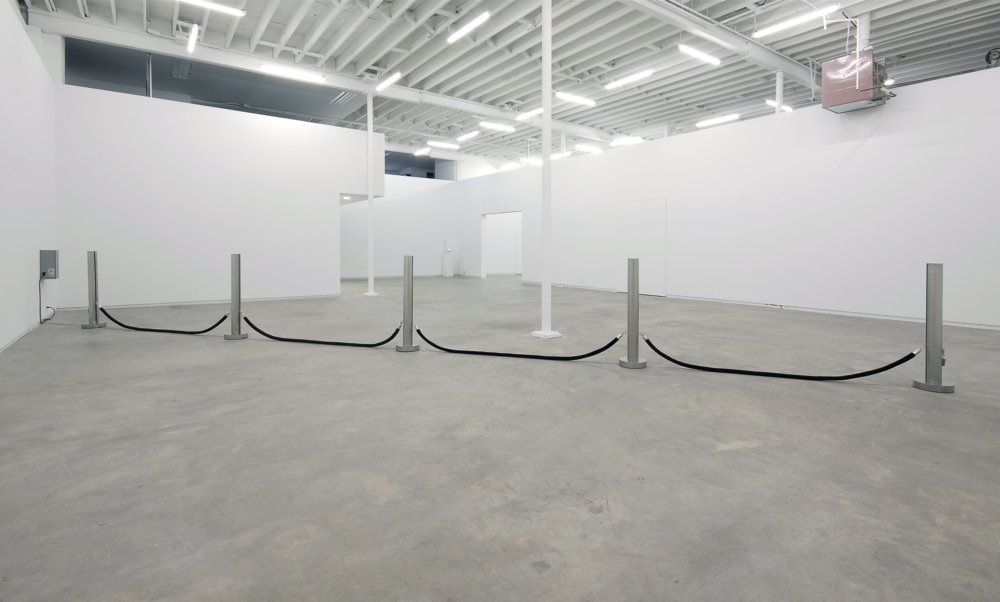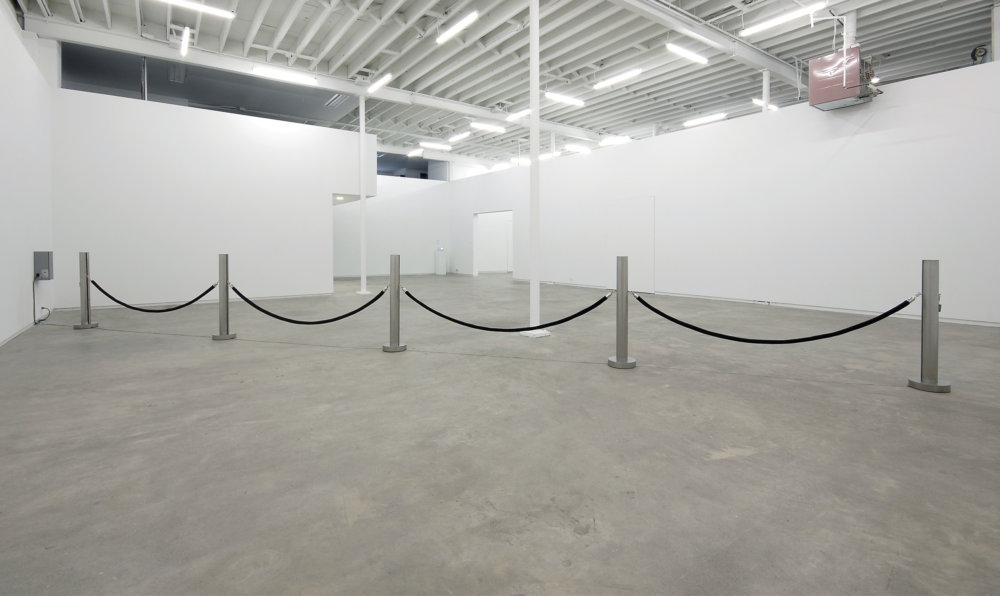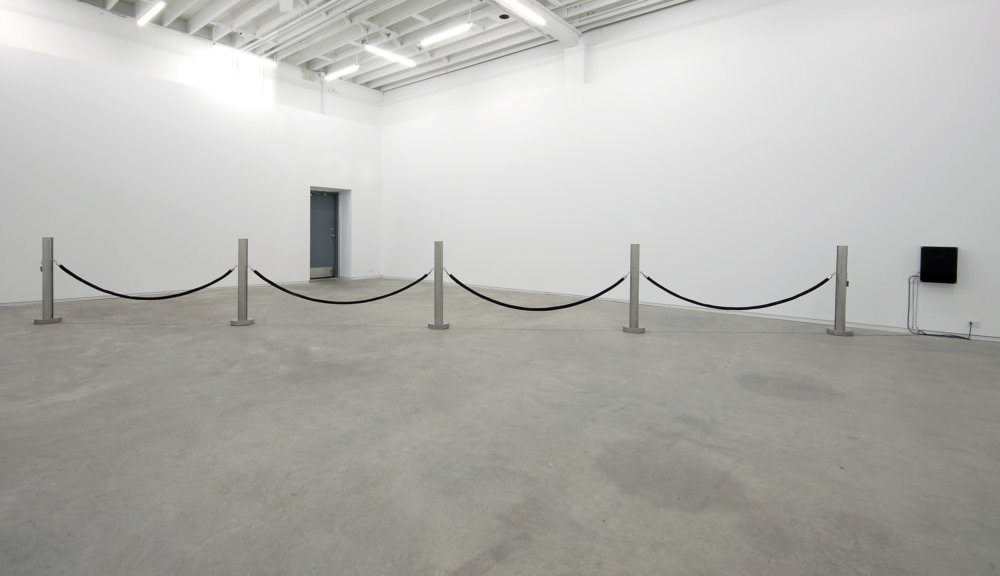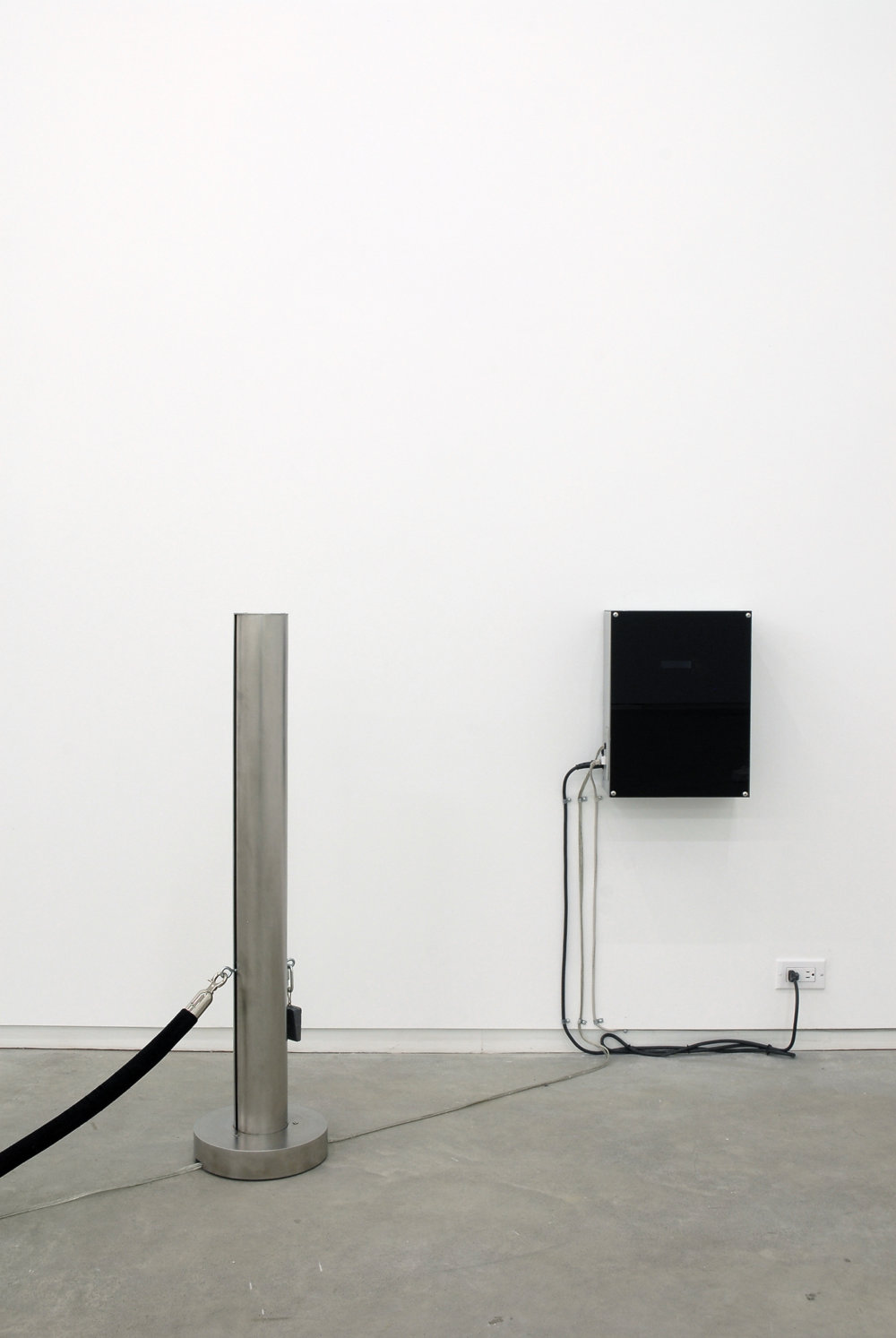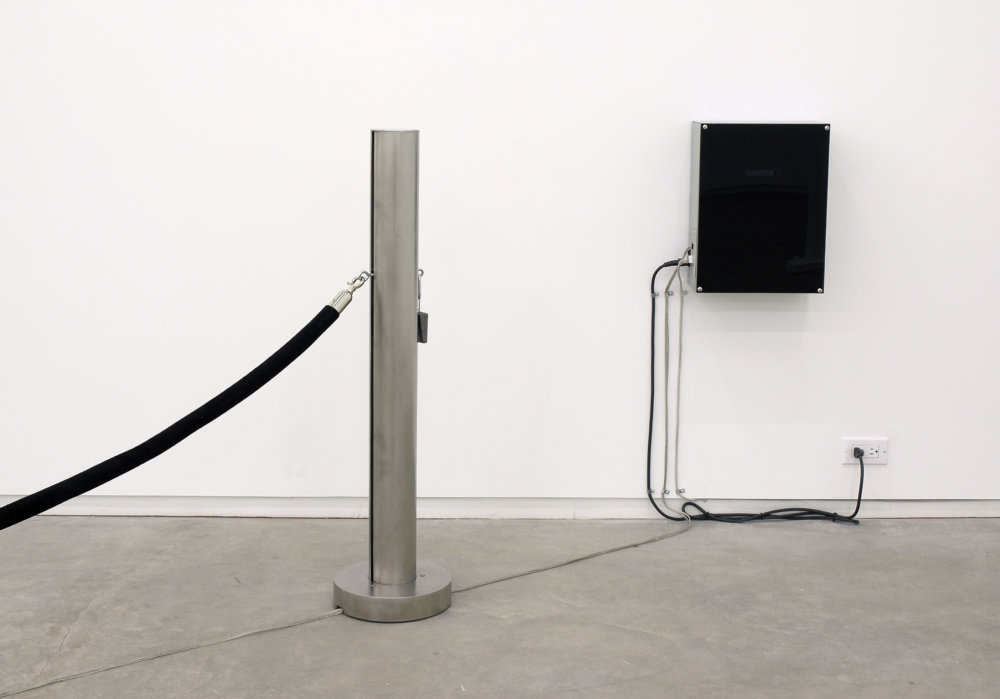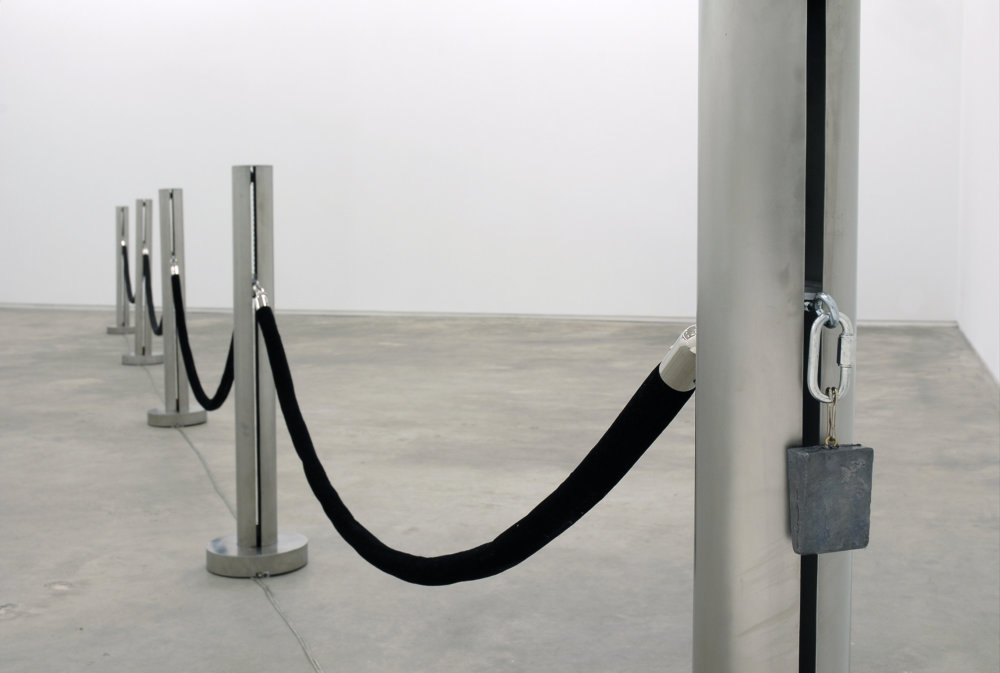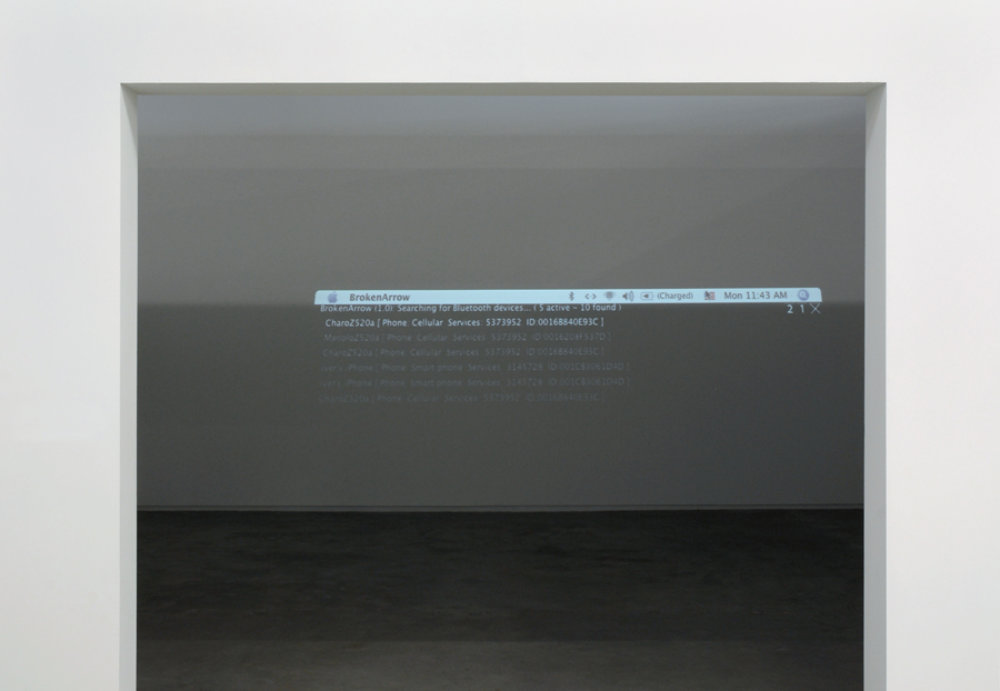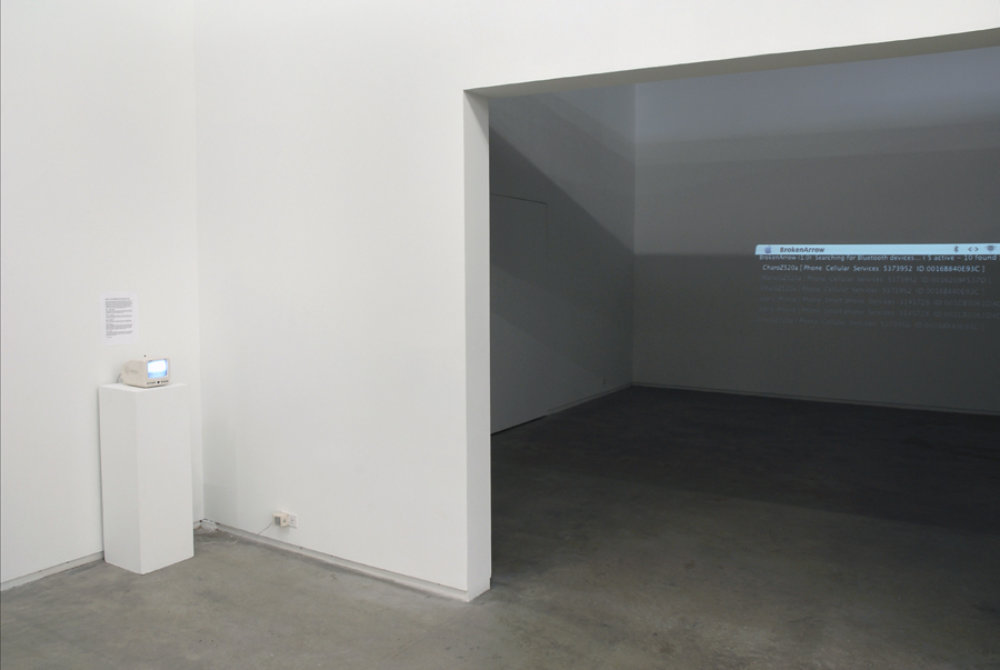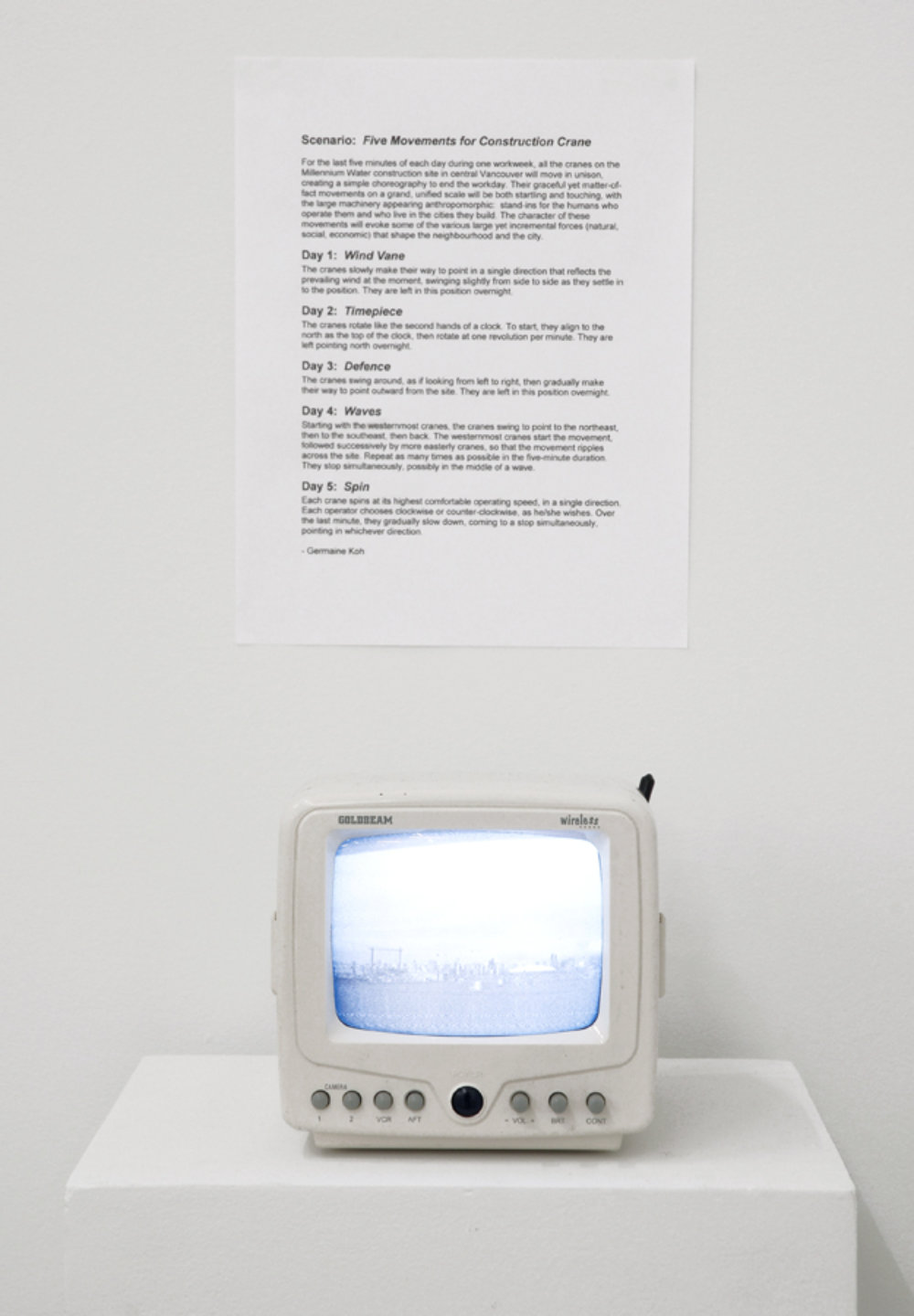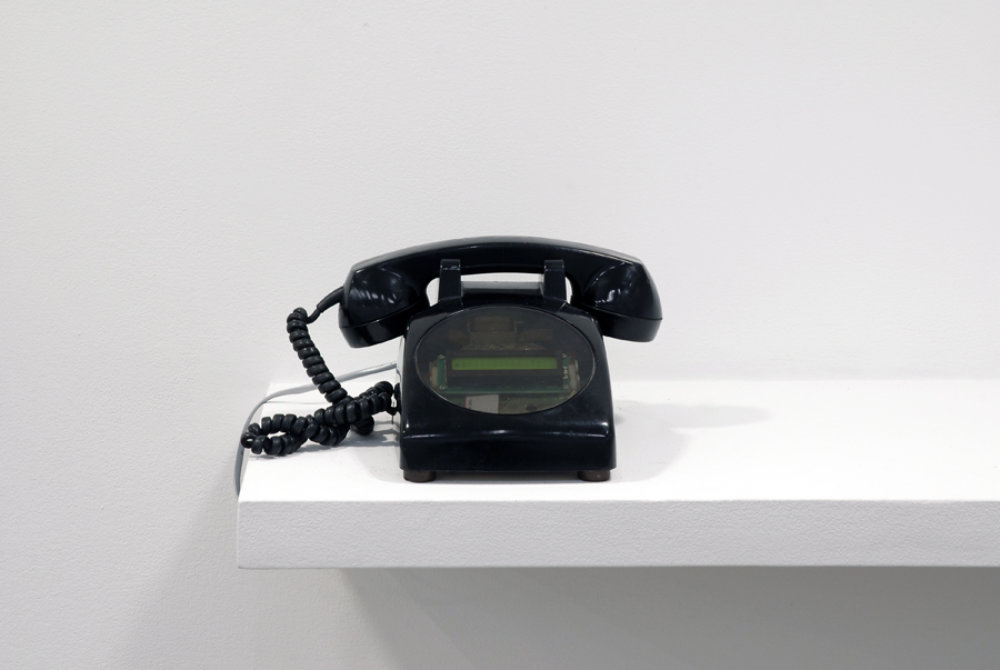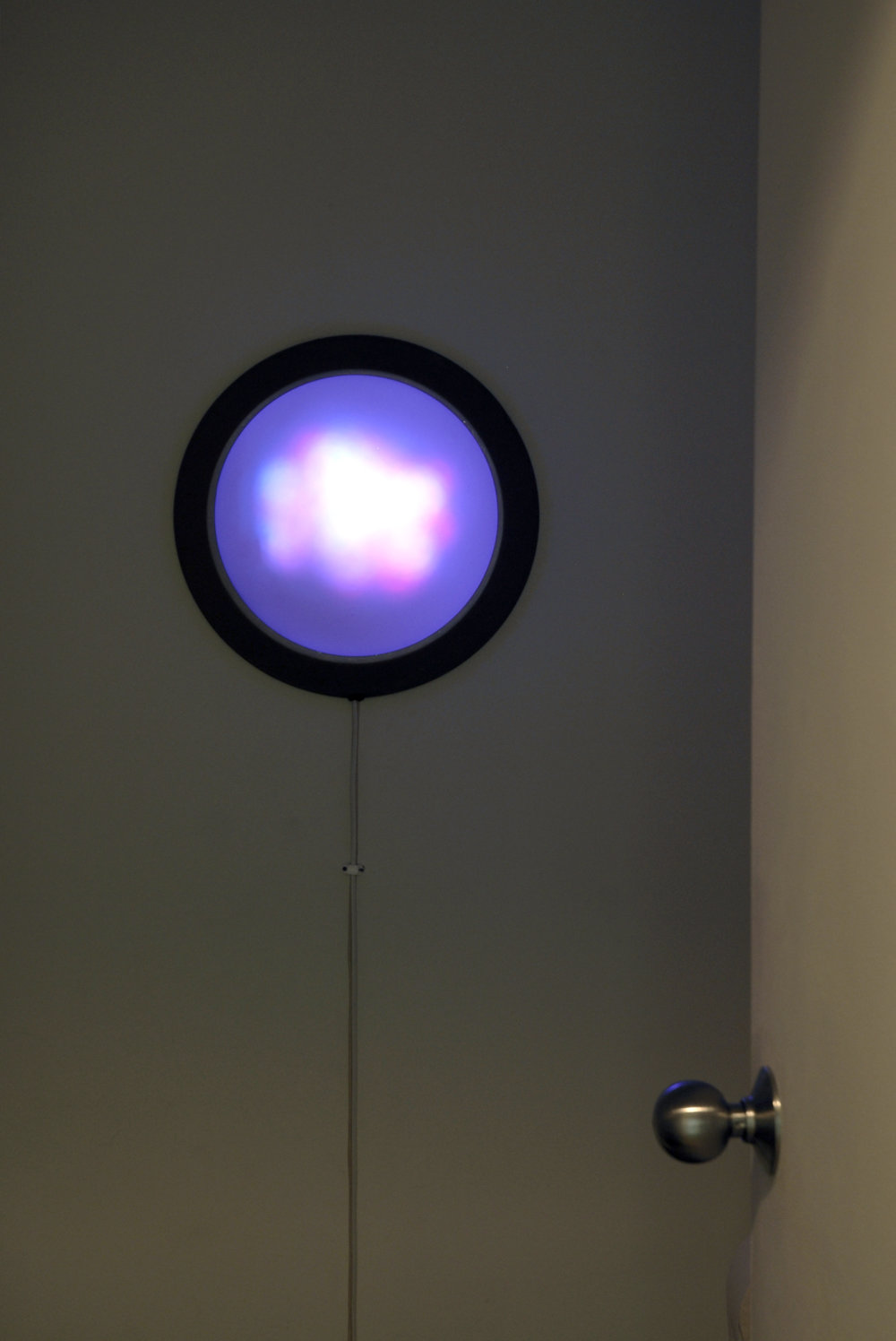Germaine Koh
April 11–May 10, 2008
Ephemeral and intangible, Koh’s work focuses on often overlooked relationships between people, built and social environments, and natural forces. Through the use of technological configurations that connect the movement and communication of people and natural occurrences, Koh exposes the underlying inter-relationships between mechanisms of social control, human organization, and fluctuations in nature. At the same time Koh addresses the notion of barriers, existing locally yet always in relation to larger global, economic, and political conditions. Following her ongoing interest in linking otherwise disparate social and environmental patterns, in each of the works in this exhibition Koh conflates the gallery environment and the world outside.
The exhibition included three new works from 2008, Fair-Weather Forces (Water Level), Broken Arrow, Volume (Traffic), and Call from 2006. Fair-Weather Forces (Water Level) is Koh’s most recent work from the Fair-Weather Forces series in which stanchions connected by velvet ropes rise and fall in the gallery according to the rise and fall of the tide measured at a dock on the coastal shore of Vancouver in False Creek. Suggestive of waves, the stanchions are linked to a sensor on the dock that reads the current water level, the state of the tide and the waves.
Through her implementation of another sensor just outside the gallery, in Volume (Traffic) Koh makes similar gestures towards the history of this body of water that used to stretch eastward towards Clark Drive before being filled in for the CN railway and industrial development. The sensor in the gallery will record the ebbs and flows of movement and noise produced by vehicle and pedestrian traffic and mark the patterns of this exterior environment through the pulsing of coloured lights.
In contrast, Broken Arrow (made in collaboration with Ian Verchere), titled in reference to military terminology for unaccounted missiles and broken arrows, will make visual and audible the constant yet imperceptible electronic activity in the gallery as viewers (and their cell phones) enter and exit the space. As with other work of Koh’s, she plays with the viewer’s expectation of form and the unspectacular, drawing attention to the way cell phones have altered our communication and the “unaccounted for” effects of bluetooth activity on our health.
In Call, the viewer becomes a participant in the work by using a re-fitted vintage phone in the gallery to call and have conversations with strangers collaborating in Koh’s project throughout the city on their cell phones. The conversations are not recorded but exist in perpetuity as oral history, as the interaction itself. In this way Koh continues to disrupt conventions of exhibiting art and sets up an arena in which the artist and the viewer not only consider, but transform and interrupt, social space.
Documentation by SITE Photography.
